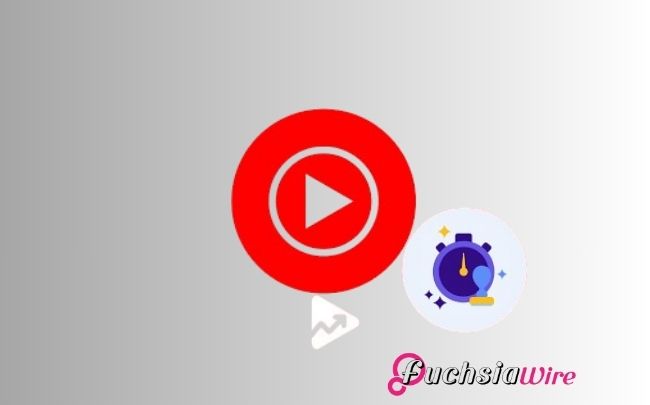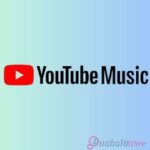Timestamp Sharing Added to YouTube Music

YouTube Music is a very familiar music streaming application. It enables its users to listen to more than millions of songs and music videos. Recently, it released a new feature known as Timestamp Sharing for YouTube music. This feature allows users to number and post clips of a particular part of the song.
In the case of podcasts, who is the timestamp sharing most helpful for? Originally, podcast listeners could only drop and pause the podcast. However, they can now selectively share fascinating or relevant excerpts with someone else.
This makes discussing podcast-related content easier and fosters interest in podcast listening. We also like YouTube Music's new feature of timestamp sharing, which is good for content creators and consumers.
Core Features of Timestamp Sharing
Purpose:
Podcasters, interviewers, and anyone creating longer-form content will find timestamp sharing helpful. It enables creators and listeners to shade the exact area of interest. This makes it easy for users to go straight to the segment they want to listen to.
Well, for podcasts, people can fast-forward with a button or two. This saves time, as the user does not have to listen to all the stuff between what they want. Timestamp sharing also enables creators to interact with their audiences more effectively. They guide them to scenes without physically searching through audio or video files.
How It Works:
Creating a timestamp is simple. While watching content, the user can pause the video at any time. They can also select the shareable timestamp from the options they are given. On the other hand, some apps offer users an interface where they can type the exact timestamp.
After the link has been shared, the recipient can access the content when the link is forwarded. This will enable YouTube Music users to return to certain parts of the content quickly.
Integration
You will remember that the YouTube Music app has included the feature of sharing content by time-stamps for its videos. This feature is particularly helpful for such content formats. The tool allows users to set timestamps for audio and video files.
This is because it is downloadable from the app-sharing menu, while the post and time stamps are flexible for all platforms. The integration is as straightforward as possible. It works well whether you’re sharing a clip from a podcast episode or a part of the music video.
Benefits for Users
Here are some additional benefits of timestamp sharing for users:
Enhanced Listening Experience:
Time-saving: Instead of listening to a long podcast, the audience can move to specific parts that interest them.
Focused Listening: By assigning and labeling, users can guide other users to a certain point, read, or topic. This makes the conversation more specific and meaningful.
Improved Content Discovery: Timestamps will enable users to search for new and exciting shows in the podcast. They will likely extend their listening experience even further.
Ease of Sharing:
Simplified Sharing: This is a technique for sharing particular parts of an episode’s events with friends, family, or a group. No need for others is to listen to the rest of the episode.
Contextual Sharing: This is why, with the timestamp feature, users can describe in detail what led them to choose a particular segment.
Increased Reach: Milliseconds enhance audience turn-up by allowing consumers to share some parts of the content with others on social networks or other platforms.
Alliance and Community Building:
Fostered Discussions can generate discourses and controversies concerning the topic or the propositions over a certain podcast.
Community Engagement: It is normal to have specific timestamps. Listeners can occasionally refer to them in everyday conversations to discuss what they like.
Collaborative Learning: Time stamps are especially helpful in group discussions. The students must recall certain information to understand the ongoing conversation.
Use Cases
This blog also finds that sharing time can be implemented to amplify different forms of content. That is why, for podcasts, creators can allow viewers to share specific episodes. The viewers can help lead others to particular parts of the episode.
In the music industry, artists should be able to remove the teasers from songs. They can promote some parts that can probably go viral. Timestamps can be useful in podcasts, lectures, and other materials. This is because an educator can point to some parts, and a student can return to the important moments.
User Venture
In general, the design of the application and the interface for creating and sharing timestamps should be plain and simple. For instance, a small button or an icon could be positioned in the player’s control bar. However, one has to note that after creating the use case, the user’s time stamp can be shared in any manner.
Among users' most frequent comments is that the stamps help them share certain moments with friends. Other users have also proposed improvements to how the shared data is presented. For instance, the ability to comment on a specific timestamp or even note it.
The Climax
To us, sharing timestamps is a great tool. It provides a new approach to consuming and exchanging audio and video materials.
This is because the timestamps take the comments back to the user's highlighted segment in the content. It enhances interaction and collaboration and makes communication easier.
However, as this feature will gradually develop, we kindly ask the website visitors to try it out and provide feedback.
Also Read: YouTube Music Announces ‘Your Music Character’ Feature


